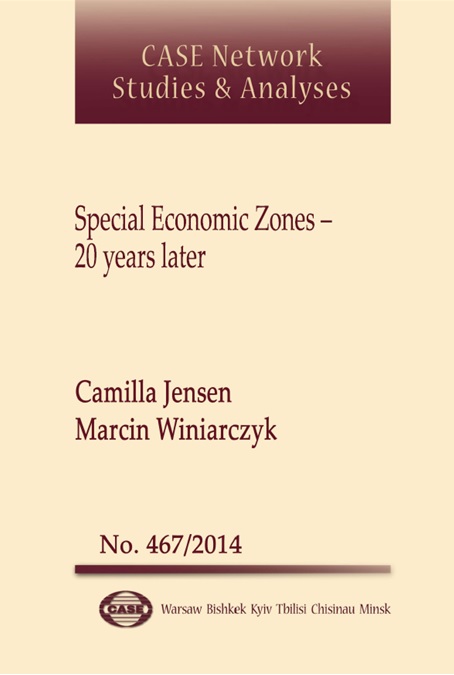Special Economic Zones - 20 years later
 In "Special Economic Zones - 20 years later" Camilla Jensen and Marcin Winiarczyk offer a panel data evaluation of the effectiveness of Poland's regional policy since 1994. The policy was originally initiated to foster new economic activity in designated greenfield zones in high unemployment areas at the beginning of Poland's transition. Over time the policy has evolved and many areas including areas that encompass economic activities from the socialist period have been adopted into the scheme. The main incentive tool for new investors to locate in the SEZs are income tax reductions. In exchange Poland is expected to get new, environmentally friendly and export oriented investments that offer additional job placements. The econometric evaluation shows that the policy has been successful mainly on one criteria which is to attract foreign direct investment into the Polish SEZs. More qualitative and long-term development oriented targets such as instilling environmental friendly behaviour are lagging behind. Comparing the wage developments in and out of the zones also suggests that industries and activities located in the zones are less skill intensive and therefore also less prone to catapult Poland into its next developmental phase, which is a skill-intensive innovation driven economy. Therefore, the authors conclude that to instil among investors in SEZs better behavioural models that will lock investors into a future oriented development path, it is necessary to consider other incentives and initiatives. For example, providing institutions and infrastructure that will or could complement long-term oriented types of private investment.
In "Special Economic Zones - 20 years later" Camilla Jensen and Marcin Winiarczyk offer a panel data evaluation of the effectiveness of Poland's regional policy since 1994. The policy was originally initiated to foster new economic activity in designated greenfield zones in high unemployment areas at the beginning of Poland's transition. Over time the policy has evolved and many areas including areas that encompass economic activities from the socialist period have been adopted into the scheme. The main incentive tool for new investors to locate in the SEZs are income tax reductions. In exchange Poland is expected to get new, environmentally friendly and export oriented investments that offer additional job placements. The econometric evaluation shows that the policy has been successful mainly on one criteria which is to attract foreign direct investment into the Polish SEZs. More qualitative and long-term development oriented targets such as instilling environmental friendly behaviour are lagging behind. Comparing the wage developments in and out of the zones also suggests that industries and activities located in the zones are less skill intensive and therefore also less prone to catapult Poland into its next developmental phase, which is a skill-intensive innovation driven economy. Therefore, the authors conclude that to instil among investors in SEZs better behavioural models that will lock investors into a future oriented development path, it is necessary to consider other incentives and initiatives. For example, providing institutions and infrastructure that will or could complement long-term oriented types of private investment.
The full text of the publication can be accessed here.

